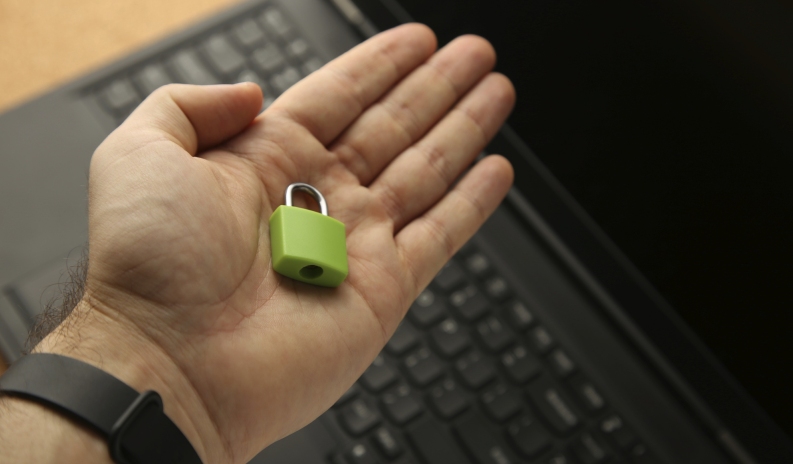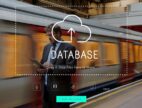How To Ensure Data Security And Privacy for Employees In Clock Software?
by Shahnawaz Alam Technology Published on: 11 March 2024 Last Updated on: 24 May 2024

Organizations worldwide prioritize data security and privacy in today’s digital age as business operations increasingly depend on clock software for time management and attendance tracking. Thus, protecting sensitive employee information becomes essential. Clock software hosts valuable data – from payroll details to biometric identifiers – demanding robust security measures to avert unauthorized access, breaches, and non-compliance with regulations.
In this article, we delve into the criticality of data security and privacy within clock software; moreover, we proactively examine strategies for the potent safeguarding of employee information – an essential facet in today’s digital landscape.
Importance of Data Security in Clock Software

If you are the owner of a small business that has a limited number of employees (say 10 to 15), it is possible to track the work hours of those employees manually. However, as the size of your business grows and the number of employees increases, it gets difficult to track the work hours of employees.
Furthermore, once you consider tracking the work hours manually, you might also encounter errors. The number of errors will increase as the number of employees grows in your organization. Also, the process will take up a lot of your time and resources as well.
However, since time tracking is one of the major aspects of your business, it is essential for you to ensure that your employees spend the right amount of time. This is one of the essential aspects for the success of your business. Hence, time-tracking software is the need of the hour.
In this case, a major challenge is the protection of employees’ data. Apart from that, employees also feel uncomfortable with their personal information going public. Hence, it is important for employers to make sure that the personal information of employees and their data are secure.
The data from your employees’ time and attendance are valuable and sensitive. These data can affect the privacy and payroll of the employee. These are directly related to the productivity and compliance procedures. Hence, it is essential for you to ensure that the information that you collect from the employees for time-tracking is secure. For optimum security, you have to make sure that the collection, storage, and access of the data are ethical and secure.
Understanding Data Security in Clock Software
The clock software: an intricate system safeguards a rich trove of employee data–personal information, work schedules, attendance records, and payroll details. This repository harbors highly sensitive material that demands rigorous security measures to forestall unauthorized access, tampering, or exposure.
The Major Aspects That Ensure Data Security In Clock Software

Encryption protocols, access controls–user authentication mechanisms, audit trails, and secure data transmission channels are among the diverse aspects encompassing clock software’s data security.
Encryption Protocols and Secure Data Transmission
Clock software: it’s critical to protect the integrity and confidentiality of data within this system through encryption. When an organization employs robust encryption algorithms–such as those used in encoding sensitive information like employee IDs, biometric data, and payroll records–they make that content unreadable to unauthorized parties.
Encoding data at rest or in transit serves a double purpose; not only does it mitigate risks associated with breaches, but it also minimizes chances of unauthorized interception–an essential security measure indeed! HTTPS and SSL/TLS–secure data transmission protocols: they guarantee encrypted communication between users and the clock software server. During this transmission, data integrity remains safeguarded; privacy emerges as a paramount concern.
Role-Based Access Control and User Permissions
With time clock software, administrators implement Role-Based Access Control (RBAC) as a fundamental security principle. This system governs user access and privileges through predefined roles and permissions; it allows granular assignment of viewing, editing, or deleting sensitive data within the system.
By ensuring that each employee has limited access to only role-relevant information, RBAC effectively mitigates risks associated with unauthorized data access or misuse. Organizations, through the implementation of RBAC mechanisms, can enforce the least privilege principle and bolster data security in clock software.
Multi-Factor Authentication and User Authentication Mechanisms
In clock software, user authentication serves as a cornerstone for data security; it guarantees that only authorized users may access sensitive information. Adding an extra layer of protection is Multi-factor Authentication (MFA): this requires users to validate their identities using diverse factors–passwords, biometric identifiers, smart cards, or one-time passcodes.
By augmenting the resilience of user authentication mechanisms and diminishing risk from compromised credentials or brute-force attacks, MFA fortifies overall system security. Organizations can bolster access controls and safeguard employee data from unauthorized access by implementing robust authentication mechanisms.
Compliance with Data Protection Regulations
Organizations utilizing clock software must honor a legal and ethical imperative: compliance with data protection regulations. The General Data Protection Regulation (GDPR), the Health Insurance Portability and Accountability Act (HIPAA), and the California Consumer Privacy Act (CCPA) enforce rigorous standards for privacy, security, and consent regarding user data; hence–it is incumbent upon these entities to adhere strictly to such provisions.
Consequently, implementing suitable security measures, securing user consent for data processing – an absolute necessity- and maintaining transparency in all aspects of handling practices are mandatory obligations that accompany clock software usage. Organizations must adhere to data protection regulations, as non-compliance could potentially incur severe penalties, impose legal liabilities – and inflict reputational damage.
Ensure Security In Data Protection Through Clock Software
The following are some of the essential steps you need to take to ensure data protection through your clock software:
1. Choose a system that meets industry standards when it comes to data regulations and compliance. Here, you must check the features to ensure that there is no fraud, error, or unauthorized access.
2. You must also train your staff in such a way that they know how to use the system responsibly and properly. Apart from that, you must also ensure that there are no issues or discrepancies in reports.
3. It is also important to monitor and audit the time-tracking data from time to time. Here, you must make sure that the data of your employee’s time matches the payroll and reporting records.
4. To ensure that no data is lost, you must back up your employee’s data on a regular basis. Furthermore, it is also essential to encrypt the data in the right manner to prevent unauthorized access.
5. You must also ensure that the system is always updated. Furthermore, you must also check whether there are requirements for patches, upgrades, and maintenance of the system.
Conclusion
In conclusion, clock software prioritizes data security and privacy: it’s where we store and process sensitive employee information. Organizations can effectively safeguard this data – mitigating the risk of breaches and compliance violations – by implementing encryption protocols, enforcing access controls, and instituting user authentication mechanisms, along with stringent compliance measures.
Not only is data security a technical concern. It also forms an integral part of organizational governance–a critical aspect of managing risks. Organizations that prioritize data security and privacy in their clock software cultivate trust, integrity, and accountability within their workforce management practices. This strategic emphasis ensures confidentiality as well as the integrity of employee information amidst our progressively digital world.
Read More:



































































































